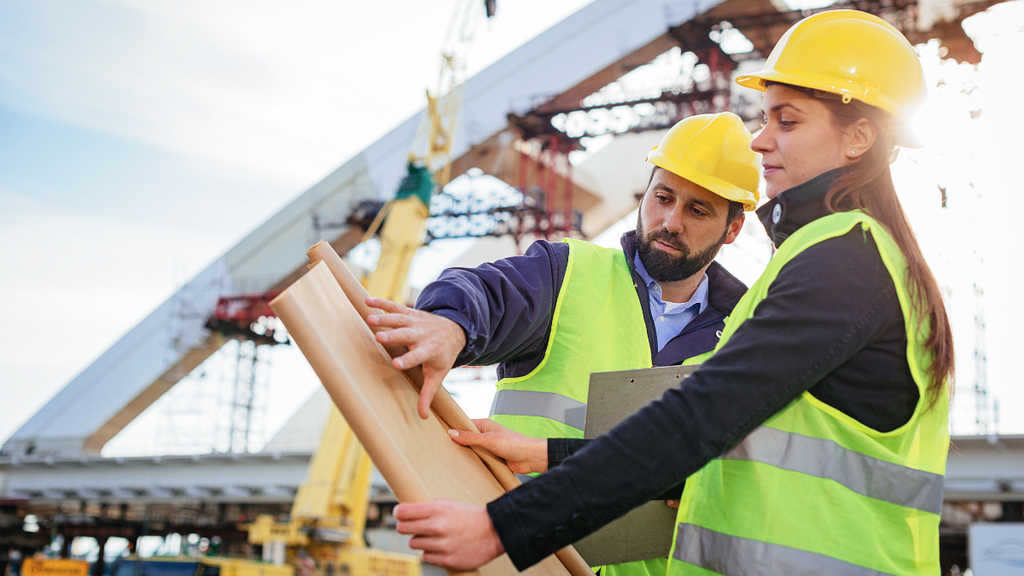The Greatest Guide To Geotheta
Wiki Article
Our Geotheta Diaries
Table of ContentsThe Basic Principles Of Geotheta The Basic Principles Of Geotheta Indicators on Geotheta You Need To KnowExamine This Report on GeothetaOur Geotheta Statements

They conduct website investigations, gather examples, perform lab examinations, and analyze data to evaluate the viability of the ground for construction jobs - Consulting Engineer. Based on their searchings for, geotechnical designers give recommendations for structure layout, incline security, keeping frameworks, and reduction of geotechnical risks. They work together with various other professionals, such as architects, structural engineers, and building teams, to guarantee that geotechnical considerations are incorporated into the general job design and application
By analyzing the habits and buildings of dirt and rock, they can recognize potential geotechnical dangers such as landslides, soil negotiation, or incline instability. Their competence assists stop failures or mishaps that might endanger lives and residential property. Right here are some comprehensive responsibilities and obligations of a geotechnical engineer: Website Investigation: Geotechnical designers conduct site investigations to gather information on subsurface problems.
They analyze the information to recognize the homes and habits of the soil and rock, including their strength, leaks in the structure, compaction features, and groundwater problems. Geotechnical Evaluation and Design: Geotechnical engineers examine the data gathered during site investigations to assess the stability and suitability of the website for building projects. They carry out geotechnical computations and modeling to examine elements such as bearing capacity, settlement, slope security, side earth pressures, and groundwater flow.
Rumored Buzz on Geotheta
Foundation Layout: Geotechnical engineers play an essential function in creating foundations that can securely support the desired framework. They evaluate the dirt conditions and load demands to identify the ideal structure kind, such as shallow foundations (e.g., footings), deep structures (e.g (https://www.tripadvisor.in/Profile/geotheta1)., stacks), or specialized methods like soil improvement. They consider factors such as settlement restrictions, bearing capacity, and soil-structure communication to create optimum structure stylesThey evaluate construction strategies, screen website tasks, and carry out field evaluations to confirm that the design referrals are adhered to. If unexpected geotechnical issues arise, they analyze the scenario and offer suggestions for removal or changes to the style. Threat Assessment and Reduction: Geotechnical designers examine geotechnical threats and risks related to the task website, such as landslides, liquefaction, or soil erosion.

Cooperation and Interaction: Geotechnical designers work carefully with various other experts involved in a job, such as architects, structural designers, and building teams. Effective communication and partnership are essential to integrate geotechnical considerations right into the total task style and building and construction process. Geotechnical engineers provide technical competence, answer inquiries, and make sure that geotechnical needs are met.
What Does Geotheta Do?
Right here are some sorts of geotechnical engineers: Structure Engineer: Foundation engineers focus on making and analyzing structures for frameworks. They evaluate the soil problems, lots needs, and website qualities to figure out one of the most suitable structure kind and style, such as superficial structures, deep foundations, or specialized methods like heap structures.They review the variables affecting incline stability, such as soil residential or commercial properties, groundwater problems, and slope geometry, and establish methods to avoid incline failings and mitigate risks. Earthquake Designer: Quake designers concentrate on assessing and designing structures to withstand seismic forces. They assess the seismic threat of a site, evaluate dirt liquefaction capacity, and establish seismic design criteria to guarantee the security and resilience of structures throughout earthquakes.
They perform field testing, collect samples, and assess the accumulated information to define the soil properties, geologic developments, and groundwater problems at a site. Geotechnical Instrumentation Designer: Geotechnical instrumentation designers focus on monitoring and measuring the actions of dirt, rock, and structures. They install and keep instrumentation systems that monitor factors such as dirt settlement, groundwater degrees, slope activities, and structural variations to examine performance and give very early warnings of possible problems.
3 Simple Techniques For Geotheta
They carry out examinations such as triaxial examinations, consolidation tests, straight shear examinations, and permeability tests to collect information for geotechnical analysis and style. Geosynthetics Engineer: Geosynthetics designers specialize in the design and application of geosynthetic products, such as geotextiles, geogrids, and geomembranes. They make use of these products to enhance soil security, reinforce inclines, give drain options, and control disintegration.They have a tendency to be investigatory people, which implies they're intellectual, introspective, and inquisitive. They are curious, methodical, reasonable, logical, and logical. Some of them are likewise social, indicating they're kind, charitable, participating, person, caring, valuable, compassionate, skillful, and pleasant. Does this seem like you? Take our totally free occupation examination to figure out if geotechnical designer is just one of your leading career matches.
In the workplace atmosphere, geotechnical engineers utilize specialized software devices to do computations, produce designs, and analyze information. They prepare reports, review task specifications, communicate with customers and group members, and coordinate project tasks. The office setting gives a helpful environment for study, evaluation, and collaboration with other experts included in the job.
Geotheta for Dummies
They often see job websites to carry out site examinations, evaluate geotechnical conditions, and gather information for analysis. These visits include taking a trip to different places, occasionally in remote or difficult surfaces. Geotechnical designers may carry out dirt sampling, conduct tests, and screen construction activities to make certain that the geotechnical aspects of the job are being implemented properly.Geotechnical designers likewise function in specialized geotechnical labs. Geotechnical research laboratory designers function thoroughly in these settings, taking care of screening tools, running tools, and videotaping information.
Report this wiki page